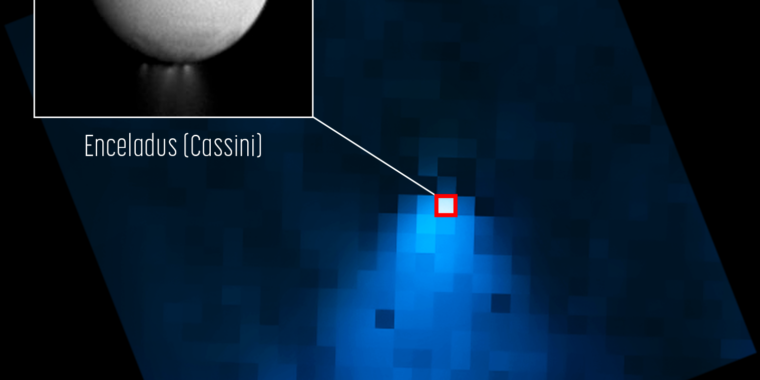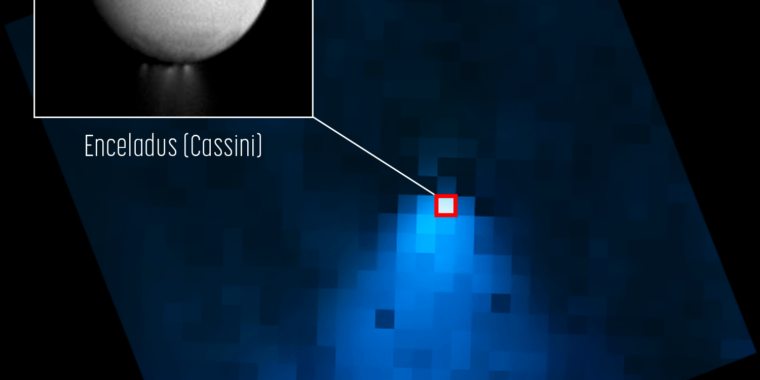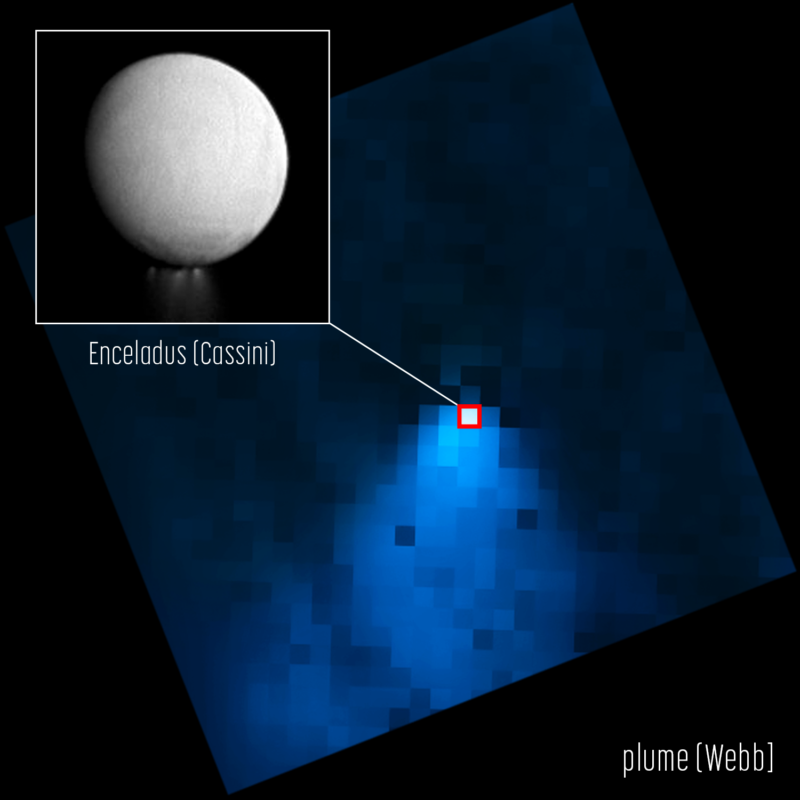In recent news, NASA’s James Webb Space Telescope has captured a spectacular image of a megaplume of water vapor erupting on Saturn’s icy moon, Enceladus. This is a huge breakthrough in understanding the possibility of life beyond Earth. Enceladus, with its icy surface and an ocean beneath, may have an environment similar to our planet’s in its early stages. With the discovery of a megaplume, scientists can better study the composition of Enceladus’s atmosphere and possibly develop a scope for life beyond Earth.
Megaplume of Water Vapor Erupting on Enceladus
What is Enceladus?

Enceladus is the sixth-largest moon of Saturn, and it is known for its icy surface. It has a diameter of only 504 kilometers and takes about 33 hours to complete an orbit around Saturn. Enceladus has a subsurface ocean of liquid water under a thick layer of ice. The moon also has geysers which spew water vapor and ice particles out into space, making it a prime target for space exploration.
What is a Megaplume?

A megaplume is a large eruption of water vapor and other gases from a geothermal vent or a crack in the ice. It is larger than a typical plume, and it can reach up to several hundred kilometers into space. Megaplumes are rare, and only a few have been detected in our solar system.
How Did the Webb Telescope Capture the Megaplume?

The James Webb Space Telescope is the most advanced telescope in space and is designed to study the universe’s first galaxies and stars. Its observations of Enceladus were part of the telescope’s early science program and were taken in December 2021. The megaplume was detected using the telescope’s Near-Infrared Spectrograph (NIRSpec) and Mid-Infrared Instrument (MIRI) while analyzing the light spectrum of Enceladus.
What Does the Megaplume Mean for the Possibility of Life?

The discovery of the megaplume on Enceladus is a significant breakthrough in the search for life beyond Earth. The plume contains water vapor, a hydrogen-rich gas that could be an energy source for life, and organic molecules. Water vapor plumes are an indication of the geothermal activity happening under Enceladus’s icy surface, which suggests that the moon has a subsurface ocean and possibly hydrothermal vents.
What other Discoveries has the Webb Telescope Made?
The Webb Telescope was launched in December 2021 and is projected to make many groundbreaking discoveries in the coming years. It has already captured new images of the galaxy and detected the most distant known galaxy. It has also discovered complex organic molecules in a protoplanetary disc, which could be a precursor to life.
What is the Future of Space Exploration?
The Webb Telescope’s future missions could help us understand the origins of life and the universe. It will also investigate the atmospheres of exoplanets and study the early universe. This new knowledge can lead to developments in science and technology and inspire future generations to take an interest in space exploration.
Conclusion
The discovery of the megaplume on Enceladus is a promising development in understanding the possibility of life beyond Earth. The Webb Telescope’s early findings demonstrate its ability to uncover groundbreaking discoveries and unlock new knowledge about our universe. The future of space exploration looks bright, and we may be on the verge of making even more significant discoveries.
FAQs
Q: How far away is Enceladus from Earth?
A: Enceladus is about 1.27 billion kilometers from Earth.
Q: What is the composition of Enceladus’s atmosphere?
A: Enceladus’s atmosphere is mostly water vapor, with tiny amounts of nitrogen, methane, and carbon dioxide.
Q: Will the discovery of the megaplume lead to future space missions to Enceladus?
A: The discovery paves the way for future space missions to Enceladus to explore it further and understand its environment better.
Q: What is the difference between a typical plume and a megaplume?
A: A megaplume is a larger eruption of water vapor and other gases from a geothermal vent or crack in the ice than typical plumes. Megaplumes can reach up to several hundred kilometers into space and occur less frequently than typical plumes.
Q: In what year was the Webb Telescope launched?
A: The Webb Telescope was launched in December 2021.
Q: What is the significance of the discovery of complex organic molecules in a protoplanetary disc?
A: The discovery of complex organic molecules in a protoplanetary disc suggests that life could exist in other parts of the universe and that the conditions for life may be more common than we originally thought.

